When I first heard about the International Confederation of Revolver Enthusiasts (I.C.O.R.E.), I thought ‘Wow, an international competition format just for wheel guns? It’s a revolver lover’s paradise!’ Well, I was mostly right. Allow me to explain…
ICORE: The International Confederation of Revolver Enthusiasts
The International Confederation of Revolver Enthusiasts, or ICORE as I (mostly out of laziness) shall refer to it throughout the remainder of this article, was created by a married couple way back in 1991. Its roots are firmly planted in IPSC, but today it has a healthy heaping of USPSA and Steel Challenge blended in, with a little sprinkle of Bianchi Cup for good measure. What does that mean?
Well, the stage designs are taken from all of those shooting sports. In a single ICORE match, there may be a stage consisting of speed shooting non-falling steel plates of various sizes at various distances and heights from a ‘box’, which is taken right out of the Steel Challenge format. Another stage might involve props such as a 2” wide plank which must be shot from while on the move. At the end of the plank there may be a wall with 2 or 3 port holes, through which the shooter must engage multiple falling steel targets, perhaps even a Texas Star, all of which comes from USPSA stage design.
Yet another stage may have primarily paper targets which must be engaged from under, over, and either side of various barriers, kind of like one encounters at the Bianchi Cup. (If you are not familiar with the Bianchi Cup don’t despair, for I will be covering my schadenfreude-laden participation in the revolver division of that amazing event in a future article). Finally, there may be an IPSC style stage which starts while sitting in a chair with the gun and ammo on a table; at the buzzer they are picked up and targets are engaged while on the move through a shoot house. The variety of stage design and shooting styles involved in ICORE definitely keeps things interesting, and most certainly will challenge most shooters of any level.
Origins of ICORE
The couple who conceived ICORE, Sharon and Michael Higashi, did so out of their discontent with the equipment escalation that was becoming so prevalent in other shooting sports. In order to remain competitive in platforms like IPSIC and Steel Challenge in the early 90’s, shooters needed very deep pockets and access to a really good custom shop, since 1911 platform .38 Super and .45 caliber “race guns” with Aimpoint red dot sights and every other custom thingamajig imaginable ruled the day at the time.
I discovered IPSC at my local range back in 1994, and I got bit rather badly by the handgun competition bug. I had grown up shooting skeet and rimfire rifle competitively, but had never shot pistols before then. However, my bank account kept the fever in check since I wasn’t ever going to be able to afford the $3000 and up pistols which were being used by most of the competitors, so I shot purely against myself. I also found good outlets in the form of rimfire pistol bullseye and bowling pin matches, which I was able to be competitive in with my bull barrel Ruger Mark II.
My Entry into ICORE
So, fast forward about 25 years and I happened across an ICORE match at my local gun club one weekend. I jumped right in, and it was love at first bang. The revolver I had at the time was a Smith and Wesson Model 15 which was my carry and glovebox gun. As far as equipment, I had a pretty beat up open-top leather OWB holster and a few HKS twist-knob speed loaders with nylon, Velcro tab holders. In other words, my equipment was state of the art – in the early 1970’s. Unfortunately, it was now the 21st Century. It became apparent rather quickly that if I wanted to compete in ICORE, even at the most basic level, I was going to need to upgrade.
Previous to my sojourn into competitive revolver shooting I had always looked at revolvers from a defensive, utilitarian perspective. To me they were simply reliable, moderately priced, go-to tools that were perfectly suited for the majority of my protection needs. Therefore, I was definitely not prepared for how expensive competitive revolver shooting could become.
Divisions & Guns
Like most shooting sports these days, ICORE has divisions. There are only 4, and the restrictions for each division are pretty simple. The most basic division, and the one I chose to compete in, is the Classic division. With the exception of the grips, sights, and cylinder release, guns in the Classic Division must be absolutely stock. No electronic sights, no porting, no heavy barrels etc. However, the gun is allowed to have an aftermarket front and rear sight as long as they are the ‘iron’ type, an extended/oversized cylinder release, virtually any kind of aftermarket grips, including Hogue ‘Big Butt’, and the hammer is allowed to be bobbed. Internally, the revolver may only have a six shot cylinder and may not use moon clips. However, the trigger is allowed to be customized, and can be converted to double-action only.
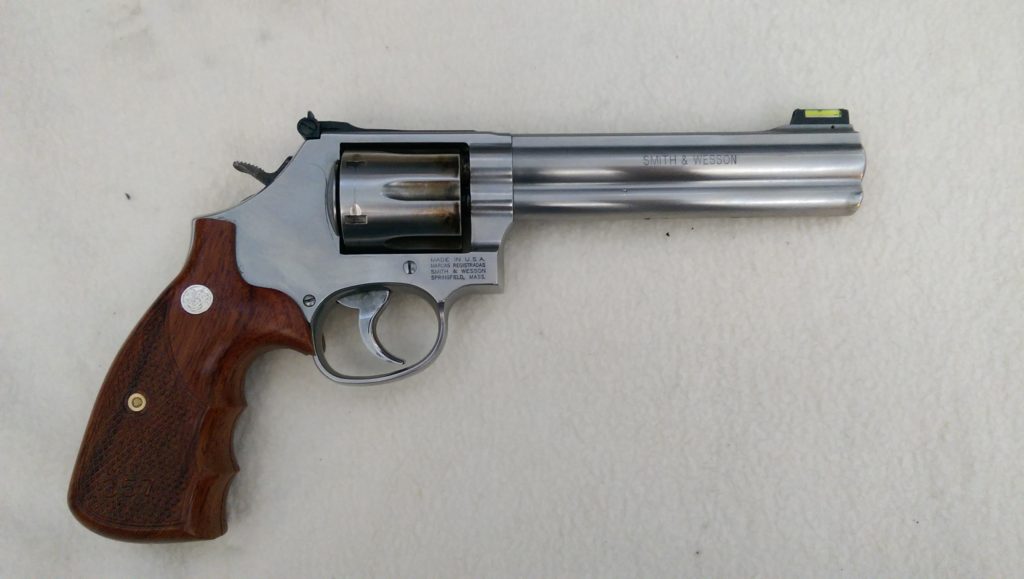
The next division is Limited 6, which has the exact same rules as Classic but moon clips are allowed to be used. The third division is Limited, which has the same restrictions as Classic but allows moon clips and revolvers of any capacity or caliber.
Finally, there is the open division where anything goes. Literally. Anything. Got an 8 shot 9mm with a 35 ounce 8″ ported heavy barrel, Aimpoint or other red dot sight, gigantic butt grips, wings for barrier stabilization, has a total weight of 76 ounces, has a 4-pound short-reset trigger, and a price tag North of ten grand? It’s good to go. Believe it or not, I’ve seen dozens of revolvers like that at ICORE matches.
Barrels are allowed to be any length, and that applies to all 4 divisions. Virtually every person in every division is typically going to use a revolver with at least a 5-inch barrel. Since there are no restrictions on barrel length from one division to another, why would anyone handicap themselves by using a revolver with a 4 inch or shorter barrel?
To that end I really wish ICORE would consider a 5th division called ‘Classic Concealed Carry’ or something along those lines. It’d use the same restrictions as Classic, but with a barrel length limitation of 3″ or shorter and no extended cylinder releases. Additionally, instead of Major and Minor power factor there could be a 5 shot and 6 shot capacity handicap that works in the same way. If such a division existed, I believe the overall participant numbers would greatly increase. I myself would probably still be competing in ICORE matches from time to time if there were a division like that.
POwer Factor, Classifications, & Equipment
Now, just like in most other shooting sports there are minimum power factors, and ICORE has Minor and Major power factors. So, if you happen to be shooting 9mm rounds then you will be placed in the Minor power factor category, and your targets will be scored slightly differently than another shooter who is using .45s and is therefore at Major power factor.
The targets used in ICORE are NRA D-1 targets, which are shaped like a tombstone. They have 3 rings and a big empty space outside of the rings. There is an illustration of one HERE. If a person is shooting Minor power factor, then the center of the target is the only space that is down zero, meaning only hits in the center don’t result in penalties. For Major power factor, the center plus the first ring is down zero. This helps to level the playing field between shooters using different calibers in the same division.
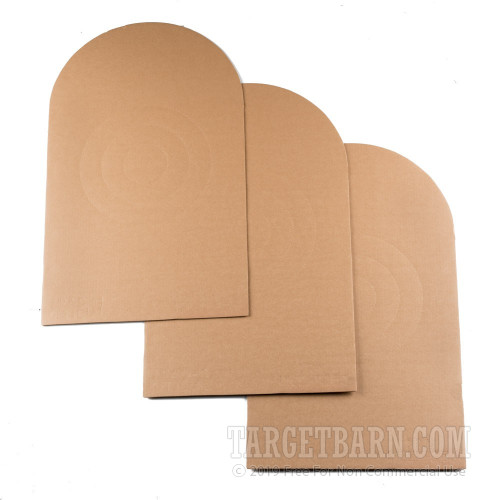
Classifications further level the playing field between shooters in the same division. Competitors are given a classification which is based on their performance over several matches, and/or a Classifier Match. The classifications in ICORE are, from lowest to highest D, C, B, A, M (Master) and GM (Grand Master). The basic idea is that regardless of the division a person is competing in, they are shooting against the other folks of the same classification.
As far as equipment goes, speed holsters are allowed, and there are no restrictions on the type or number of speed loaders/moon clips a person can carry, or where on the belt they are placed. Therefore, most competitors put all their speed loaders/moon clips front and center on their belt, and the standard amount of speed loaders/moon clips carried is 6. For more details on this and other specifics, I recommend consulting the ICORE rulebook.
ICORE STartup Cost
Which brings me to my personal experience with ICORE. On a recommendation from a trusted consigliere, I purchased a lightly used Smith and Wesson 686 Classic to the tune of about $700. Then I had it customized so I could be on par with all the other folks shooting the Classic Division. After a serious trigger job, double-action only conversion, hammer bob, cylinder chamfering, oversized cylinder release, and a fiber optic front sight, my lightly used $700 686 Classic now had an actual cost of around $970… and I hadn’t bought grips yet.
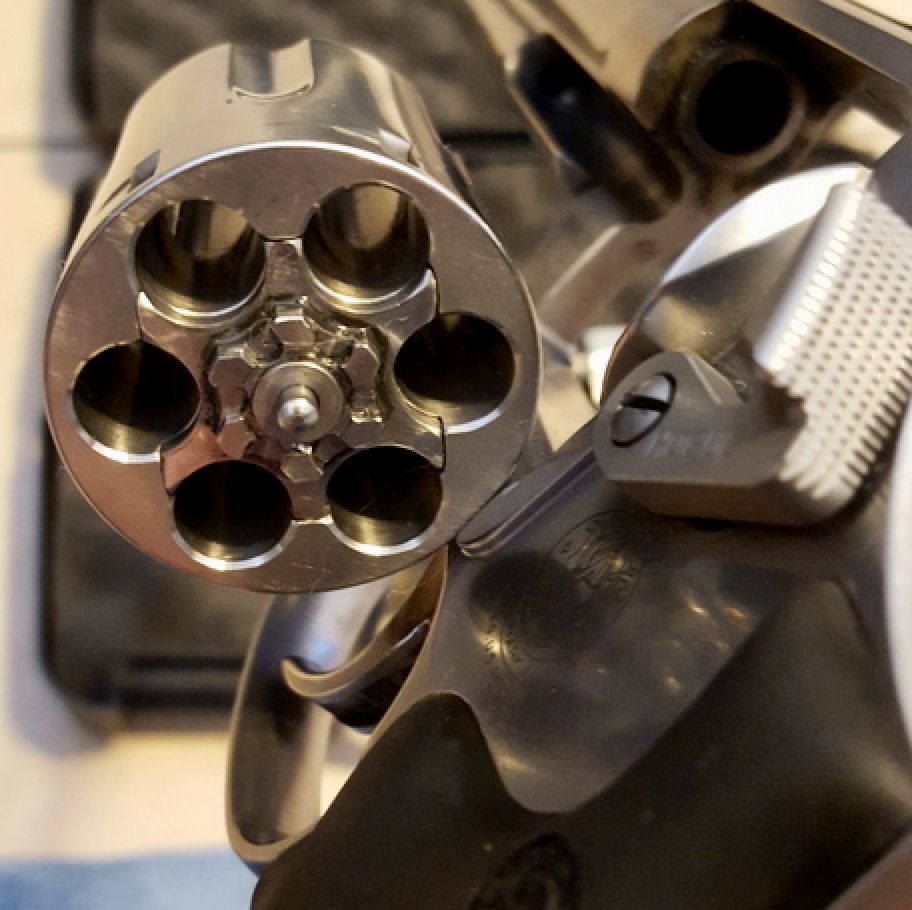
After trying about four for five different grips I over the course of about eight weeks I finally found a pair that really and truly worked for me. By that time, I was into the gun for about $1200. Another expense I wasn’t prepared for was the gear. I used a Safariland competition speed holster that cost around $80, a competition nylon inner and outer belt which was about $60, and six Safariland Comp III speed loaders with two holders. Each speed loader was around $20, so $120 for the loaders themselves. Then came the holders which held 3 speed loaders, and cost about $25 bucks a piece. That’s a grand total of about $310 for the gear and $1200 for the revolver. So I spent just over $1500 to get started in the most basic division of ICORE.
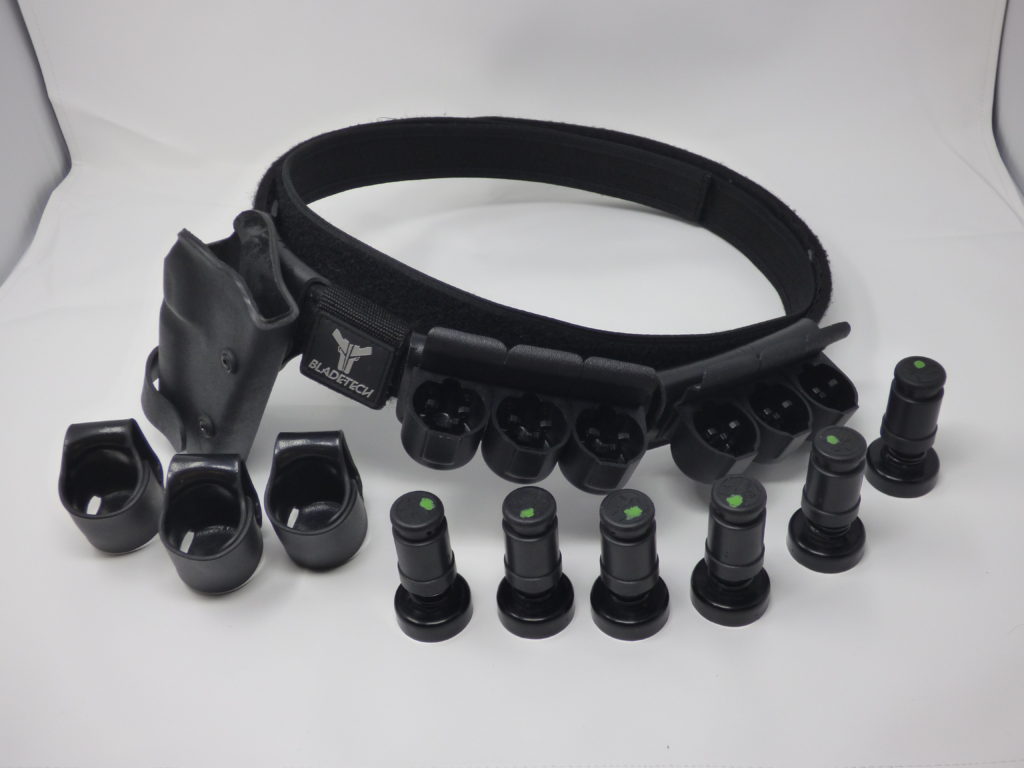
Then there was the ammo. The associated expense of the ammunition was exasperated by my unfortunate situation of not having the appropriate space for reloading equipment. There is no question that if a person endeavors to compete with revolvers it is basically a necessity that they reload their own ammo. Factory .38 special target ammo is expensive, can be unreliable as far as accuracy and velocity, and the primers will most likely cause a tuned competition revolver to have ‘light strikes’.
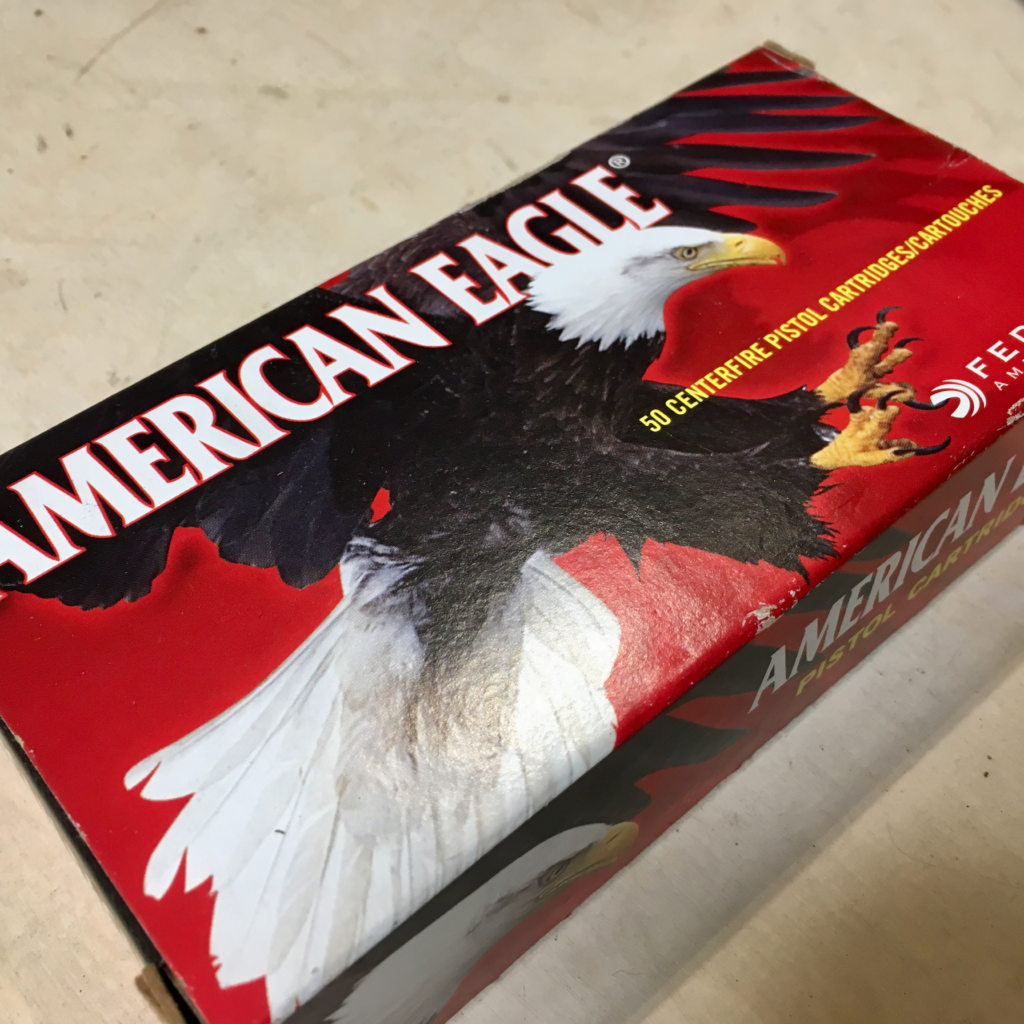
For anyone who might not be aware, revolvers that have had competition trigger jobs will often not strike the primer hard enough to cause ignition. Federal primers are known to have the ‘softest’ commercially made primers, therefore competitive revolver shooters use Federal primers pretty much exclusively. This can make Federal primers hard to find because they are in great demand. I cannot adequately describe the frustration I felt the first time I realized that my revolver would not reliably fire rounds with any other primers.
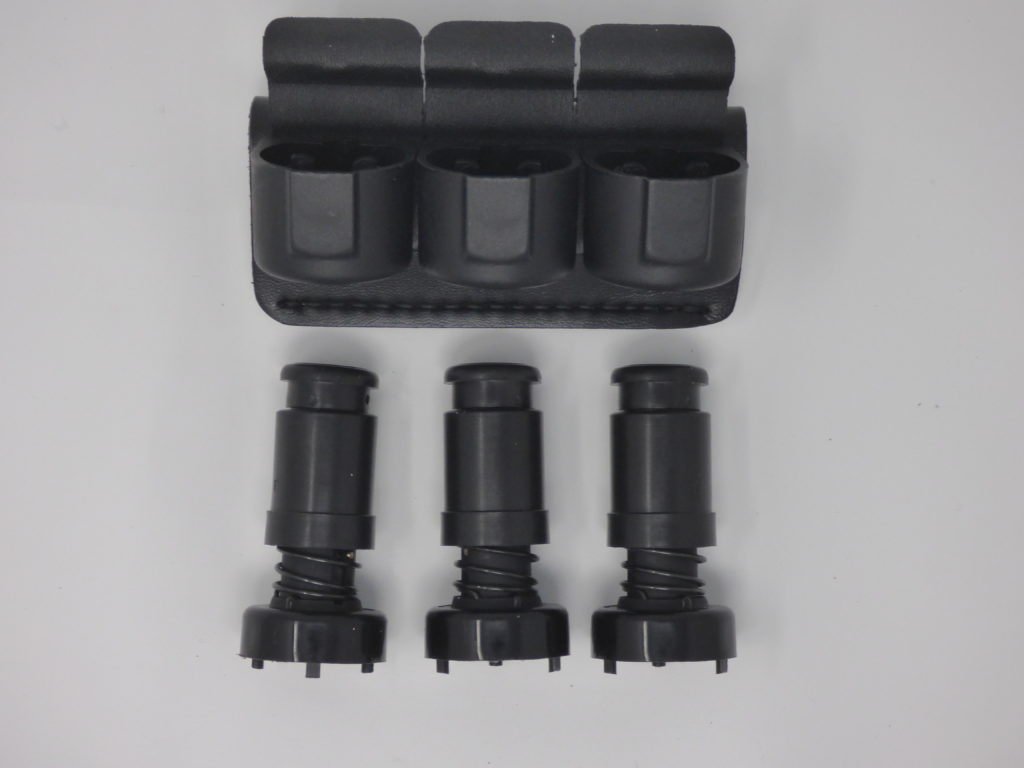
Since I didn’t have the option of reloading myself, I typically purchased ammo (and still do) from trusted and well-known commercial reloaders. Unfortunately, they don’t always have Federal primers on hand so I often had to hunt down and purchase the primers myself, then provide them to the re-loader. The other option was to shoot Federal factory target ammo. So taking into account the start-up costs for gun and gear, and then the ongoing costs for ammo, I guess the primary question that I might ask is ‘As time has passed, has the vision of the founders of ICORE played out the way they conceived it?’
My Experience Shooting in ICORE
Once I got past the growing pains of an ICORE newbie, I found shooting in local matches to be great fun. It just so happens around the time I became involved in ICORE there were two clubs within 40 minutes of where I live that supported the format. That meant that I could shoot a match twice a month, which is pretty amazing considering there are many places in the U.S. where a person would have to travel a long way to find a club that supports ICORE.
I met a lot of great people at the matches, some of which I am still friendly with today. The other shooters were amazingly helpful right from the start, always willing to offer advice and sometimes even equipment if there was someone in need. They were extremely eager to introduce new people to the sport. The majority of ICORE participants in my area were 10 to 15 years my senior, and I am no spring chicken. It makes sense in the greater scheme of things, since it’s the older generations that typically gravitate toward revolver shooting. Unfortunately it’s also a reflection of the times as ‘bottom feeders’ are exponentially more popular than revolvers these days, especially among younger shooters.
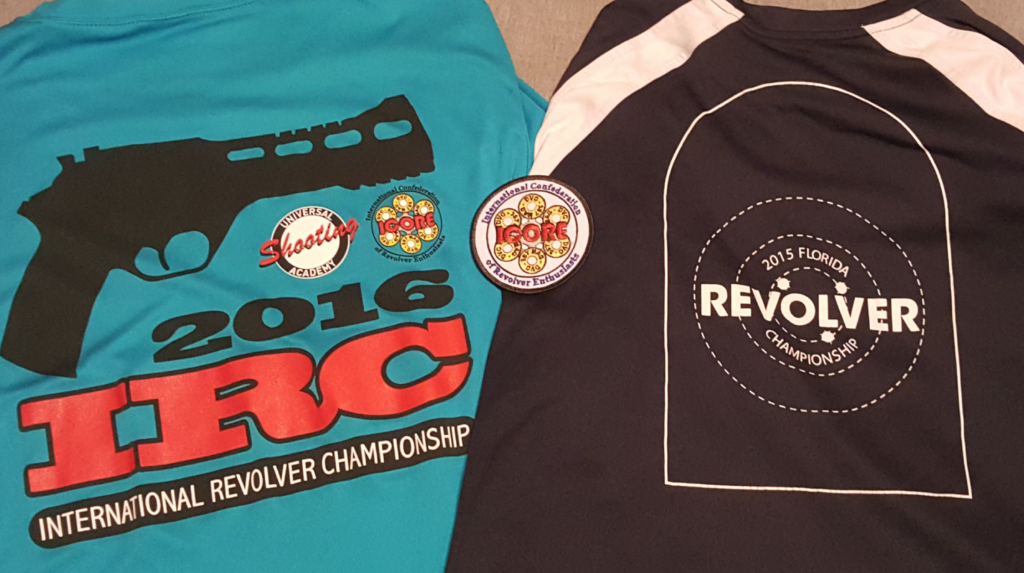
While I found the variety of stages in ICORE fun, I also frequently experienced frustration along the way. It seemed that no matter how much I practiced and how matches I participated in, I just couldn’t seem to break through my personal performance wall. I was a high ‘D’ level shooter for most of the first year, then I began scoring in the ‘C’ range, and my expectation was that by the end of the second of year I would be a high ‘B’. That never happened though.
When I stopped shooting ICORE, mostly due to financial reasons, I was still a high D/low C shooter after several years of participation. While my performance levels rose in other formats like IDPA, I just couldn’t seem to improve in ICORE. Most of the matches I shot, (including a state championship, and the International Revolver Championship which took place in my home state two years in a row), consisted of very good scores on a few stages, then mediocre to poor scores on most of the others.
In the end, I simply lacked the consistency which is required to be competitive. Another factor which led to my giving up ICORE was that the local match turnouts were typically fairly small, often with less than 20 competitors showing up, and most of the people who did come out shot in the Open and Limited divisions. Classic was just not that popular in my area, so I frequently wound up shooting against just myself (sound familiar?). Sadly, within a year of my entry into ICORE one of the two clubs stopped having matches all together. Fortunately, the support at the one club is very strong, so I don’t think it’s going away anytime soon.
The Bottom Line
In closing, I think of my walking away from ICORE as a hiatus. I absolutely will return to the sport one day, when circumstances in my life are more favorable. It is a fun and very challenging platform, with a lot of truly great people participating in and supporting it. If you haven’t tried an ICORE match, you should definitely check it out. For more information visit ICORE’s homepage.

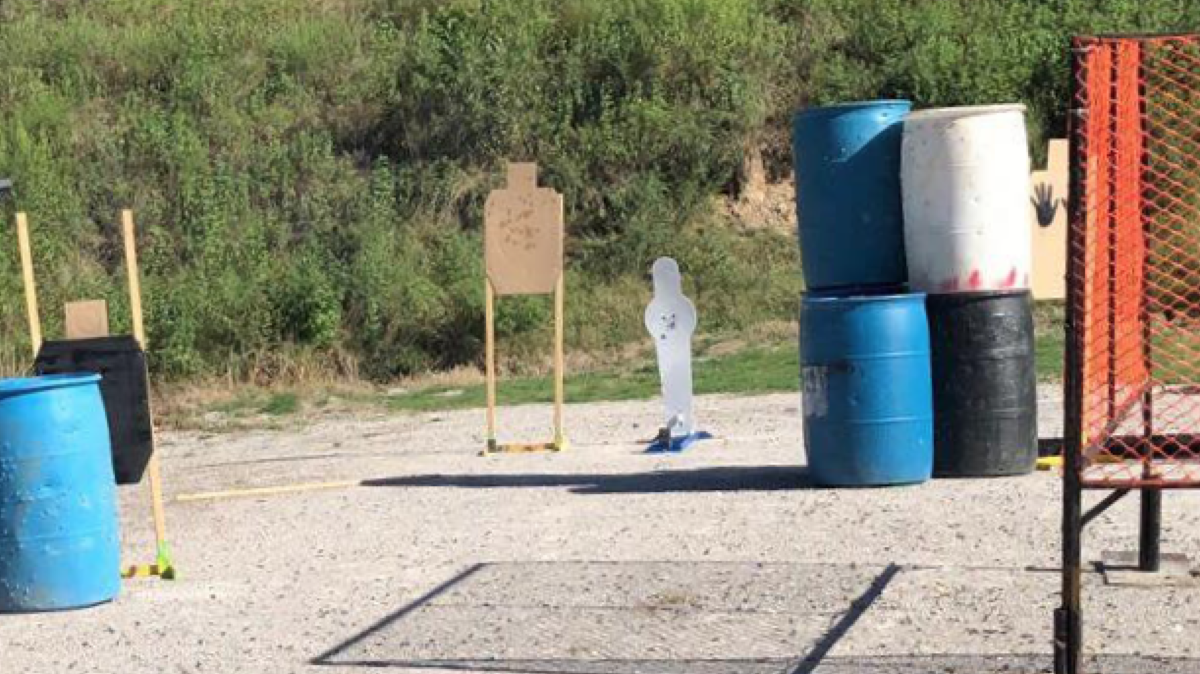
I’ve thought about getting trying competitive/sport shooting if I ever had the opportunity, but just don’t have the time or money. I don’t reload either. One of my two Model 10s and factory ammo is what I’d have. There’s too many things I wish I could do while I’m still young (29), but that’s just how life is right now.
I totally understand. I also passionately state that you could gain quite a lot by shooting your models 10s in an IDPA match if there is any opportunity for that where you live. IDPA is all about shooting what you carry, and attempting to keep as much real world practicality in their stages as possible.
There’s absolutely nothing wrong with showing up with your M10 and factory ammo. Your goal on your first time out won’t be to win the match – it will be to learn. And there’s an awful lot of learning that could be done with your setup. You’ll have a looong way to go before your equipment starts to make a difference 😉
Look for opportunities. I used to attend a local indoor match every Thursday night. I got a lot of experience out of that little match. All it cost me was $10, 50 rounds of ammo, and about two hours (two and a half if I got there early to help them setup). Believe me – I know exactly what it’s like to be broke but I’ve always subscribed to the saying that, “you make your own luck.” If you really want it, go find something that fits your budget.
I’m not trying to lecture, just encourage because I’ve been there!
Well when you gentlemen put it that way, I guess I owe it to myself to try and find something IDPA related. I’m not aware of any events in Central Kentucky, but I’ll see what I can find.
“To that end I really wish ICORE would consider a 5th division called ‘Classic Concealed Carry’ or something along those lines. … I myself would probably still be competing in ICORE matches from time to time if there were a division like that.”
It’s not an ICORE division (yet), but they just instituted a “
Snubby” special recognition category. Per the May 2019 rev of the Rules, it’s now included in Regional competitions – I shot my S&W 649 in last weekend’s Midwest – and the upcoming IRC
THAT is fantastic news! I am very happy to hear that and sincerely hope they do in fact institute it as a division.
Thanks for letting me know!
What research did you do? There are no minor/major power factors. Everyone is 120 PF.
I know you’re not a regular here, so I’m going to give you the benefit of the doubt. In the future if you have a question or additional insight, don’t try to come across like the person you’re commenting to is an idiot. Obviously the research Ian did was shoot ICORE. Here is an example of how that might be better phrased: “Ian, from reading your post it seems like it has been a little while since you’ve been involved in ICORE. Just FYI, power factors have been removed and everyone is now 120 PF.”
It was a simple question. I’m sorry you found it rude. If I wrote “FYI your information is wrong” as you suggested it could also come across just as rude as you found my comment.
But you are incorrect. I regularly read y’alls articles and work. The work that goes into most articles shows hours of hard work. In the case of gun reviews, weeks of hard work. I don’t comment as the work is so complete and thorough.
That’s why I’m so surprised that this article had such a glaring error. Major/minor, to my knowledge, has never existed (and certainly didn’t exist at the 2016 IRC).
I love the sport. I have been eagerly waiting for a post on it. So perhaps I’m being too sensitive about it. But I just wanted it to have the same attention to detail that you give your other work.
My mistake, then. I’m very protective of the comments section here, so I apologize.
The ‘research’ I did was shoot in ICORE matches at the local, state, and international level for approximately 4 years.
I reviewed the most recent rule book and indeed, there is only a minimum power factor of 120 currently. I was quite sure that when I was competing there were major and minor power factors, but if I was mistaken I apologize. I shot in multiple disciplines for several years so it’s quite possible I am getting the PF designations confused with USPSA.
Please do forgive me sir, as I am only human and I wrote this article basically off the top of my head, based on my own experiences and the last rule book I had downloaded, which may have been out of date.
Have a great day.
No worries Ian, we all make mistakes like that. In fact, just the other day, I meant to write, “that new Colt King Cobra is pretty handsome,” and I accidentally wrote, “I can’t believe S&W is still putting those #*%@&+! internal locks on their guns!”
Happens all the time. ; ^ )
Ian,
Thanks for the article on ICORE. It is an enlightening look at an interesting sport.
Morgan
About what weight were you able to get the trigger down to on your 686? I shot a local IDPA match with a bone stock S and W 66 last week. I felt like I was in slow motion compared to the Walther PPQ I normally run!
Is there any hope of being able to run a stock weight double action revolver trigger as fast as a striker fired trigger with practice , or do you need a trigger job to achieve this?
Brendan, thanks for writing! I think your salvation lies in taking some of Justin’s advice on dry fire. The extra time spent there will improve both you AND the action on your M66. Interestingly, an action job that lightens the trigger pull will often slow its reset, costing you even more time, so if you’re trying to improve your speed, that may hurt more than help.
There’s some shooters out there who can make a revolver sound like it has a “happy switch” (Full Auto), so yes, it can keep pace with the striker guns in the right hands . . . at least until it’s time to reload. ; ^ )
Forgot to say, that PPQ has what I think is the best stock trigger in any striker gun ever made. Comparing a stock DA S&W trigger to it is truly an apples and oranges deal—you sure made it tough on yourself! ; ^ )
Thanks Mike. I really enjoy both the PPQ and m66!
Brendan, I fully agree with Mike on both counts, although I’d put the CZ P10C as a tie or perhaps better for striker fired trigger.
I highly suggest you check out Jerry Miculek’s videos/YouTube channel if you’d like to see what’s possible when it comes to running wheel guns. He holds multiple world records and revolver championship titles in virtually every dicipline imaginable, including ICORE of course.
Ive never been a speed shooter so I like NRA Action Pistol (Bianchi Cup) the best. The reasons why? — its not a track meet– all shooting is done from static positions, its not about how fast one can reload, revolvers and semi auto pistols compete on an equal basis, all shooting is done under time pressure–and the the time limits are reasonable and achievable, the courses of fire don’t change so assessing individual performance is much easier. Courses test ability to shoot on multiple targets as far as 50 yards, shooting at a moving target, shooting around barricades and shooting at 8 inch diameter falling plates. In Production Division cost is minimal–stock K or L frame Smith or Ruger GP 100. Heavy barrel PPC revolvers are perfect for the Metallic Sights Division. Its a tough accuracy based shooting sport–with emphasis on the fundamentals.
Bianchi Cup needs more written about it. It’s a very interesting sport that is held in high esteem by people I hold in high esteem, but outside of those few individuals, there isn’t much info out there from participants or other ‘regular joes’. If I wanted to learn how to get into shooting USPSA or IDPA, heck even Cowboy Action, I’d have lots of places to learn, not to mention 3-gun! Bianchi cup is almost esoteric by comparison.
Hi there – funny you should mention that… I have an article on the Bianchi coming down the pike as we speak. I shot it in 2014 I think it was. Had an amazing time and have some a fun story to share about factory ammo and major matches.
“The revolver I had at the time was a Smith and Wesson Model 15 which was my carry and glovebox gun. As far as equipment, I had a pretty beat up open-top leather OWB holster and a few HKS twist-knob speed loaders with nylon, Velcro tab holders. In other words, my equipment was state of the art – in the early 1970’s. ”
It would be kind of fun to have a “come as you are” type classification for people to compete with what they actually carry against other people and their carry gear. Not sure how one would figure out if their gear is actually carried, but maybe people would be honest about it.
Mike (not Mike Wood)
I shot an ICORE match back in 2015 and had a heck of a good time doing it. Unfortunately, it’s a 200-mile round trip to get to a club that has the match, so I’ve only gone that one time. But I have been able to shoot in competition via IDPA since 2013; my revolver is always a curiosity at an IDPA shoot, and I’ve learned a lot from my myriad mistakes on stages. I generally practice what I flubbed at the match on my club’s range to improve, and it’s made me a better shooter. Health issues, actually the cost of said health issues, forced me to stop going to IDPA matches in 2018, but I plan on resuming next month.